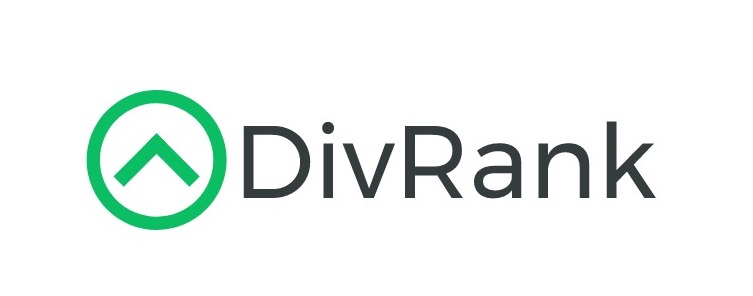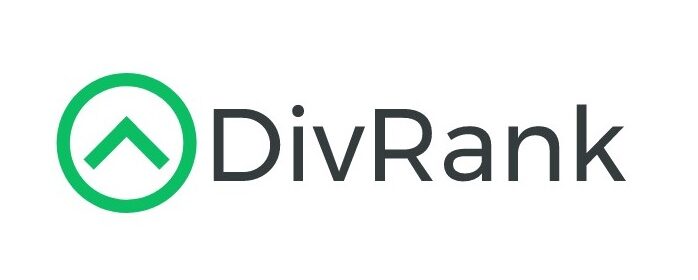What Is the Dividend Payout Ratio?
When you’re analyzing dividend-paying stocks, one of the most important numbers to understand is the dividend payout ratio. In simple terms, this ratio tells you how much of a company’s earnings are being returned to shareholders in the form of dividends. It’s a snapshot of how a business balances rewarding its investors and reinvesting in future growth.
The classic way to calculate it is straightforward: take the annual dividends per share and divide it by the company’s earnings per share, then multiply by 100 to get a percentage. If the result is 50%, that means half of the company’s profits go to shareholders, while the other half stays in the business. This leftover portion is called the retention ratio—basically, the money the company keeps to reinvest or save for a rainy day.
Why does this matter? Because the payout ratio gives you insight into how sustainable a dividend might be. If a company is paying out 90% or more of its earnings, it’s not leaving much cushion for tough times or future investments. On the other hand, a company with a 40% payout ratio likely has more breathing room and may even be in a stronger position to grow its dividend over time. There’s no universal “ideal” payout ratio it varies by industry—but moderate, balanced payout levels are usually a healthy sign.
Let’s say Company A earns $1 per share and pays out $0.60 in dividends. That’s a 60% payout ratio—fairly reasonable. Meanwhile, Company B earns $2 per share but dishes out $1.50 in dividends, resulting in a 75% payout. While that might seem generous, it also means less flexibility if earnings dip or capital is needed elsewhere. Generally, the lower the payout ratio (within reason), the more sustainable the dividend tends to be.
Why Cash Flow Coverage Matters
Now, while earnings-based payout ratios are widely used, there’s another approach that many income investors prefer: the free cash flow (FCF) payout ratio. This method swaps out accounting earnings and instead uses actual cash—specifically, the free cash flow left after capital expenditures. Why? Because dividends aren’t paid with paper profits, they’re paid with real money in the bank.
Sometimes companies report solid earnings but have little free cash flow, which can make their dividends harder to sustain. Other times, the opposite is true—they may show modest earnings on paper but have strong free cash flow thanks to non-cash expenses like depreciation. In those cases, the FCF payout ratio gives a more honest look at whether the dividend is truly secure.
This distinction becomes even more important in certain sectors. Real Estate Investment Trusts (REITs), for instance, often have high non-cash costs, making their earnings-based payout ratios look inflated. Instead, they use metrics like funds from operations (FFO) to assess how well their dividends are covered. Similarly, energy MLPs often rely on distributable cash flow.
Ultimately, the payout ratio—whether based on earnings or free cash flow—is a key piece of the puzzle when you’re evaluating dividend stocks. But understanding the context behind the number, and knowing which version of the ratio to use, makes all the difference.
Why Payout Ratios Matter for Dividend Investors
The dividend payout ratio isn’t just a number—it’s a window into how a company manages its profits and what that could mean for the future of its dividend. By comparing how much a business earns to how much it pays out, you get a sense of whether its dividend is on stable ground or skating on thin ice. Let’s break down what different payout levels can tell you.
Low Payout Ratio (20%–40%)
A lower payout ratio often signals that a company is holding back a large chunk of its earnings for reinvestment or debt reduction. This can be a smart move, especially for younger companies or those focused on growth. A low ratio means the dividend is usually well-covered and has room to grow over time. However, in more mature businesses, an overly conservative payout may raise questions about whether management is underutilizing available capital. Still, for income investors, a low payout often means peace of mind when it comes to dividend safety.
Moderate Payout Ratio (40%–60%)
This range is generally considered the sweet spot. It shows a company is striking a balance—rewarding shareholders while still reinvesting for the future. Companies with a moderate payout often have more flexibility to maintain or grow dividends during periods of slower earnings growth. Many dividend stalwarts, including the so-called “dividend aristocrats,” fall into this range, demonstrating a strong history of sustainable dividend policies. For long-term investors, this is often where you’ll find the most consistency.
High Payout Ratio (70%–90%)
When most of a company’s earnings go out the door as dividends, there’s less room to maneuver. High payout ratios aren’t inherently bad—many mature, stable companies like utilities maintain elevated payouts—but they come with added risk. If earnings take a hit, there’s not much buffer left to protect the dividend. Investors chasing yield should tread carefully here, asking whether the company’s profits are predictable enough to justify the high distribution.
Unsustainable or Negative Payout Ratios
If the payout ratio goes over 100%, the company is paying more in dividends than it earns. That’s not sustainable for long. This might happen during a temporary dip in earnings, and some companies can ride it out using reserves. But if it lasts, it often signals a dividend cut is on the horizon. A negative payout ratio is even worse—it means the company is losing money and still paying a dividend. That’s a major red flag and usually not a recipe for long-term stability.
Ultimately, payout ratios are just one piece of the puzzle. Context matters—what looks risky in one sector might be standard in another. But when used thoughtfully, this metric is a powerful tool for judging how reliable a dividend really is.
Spotting Trouble: Red Flags in Dividend Payout Ratios
The payout ratio is a valuable tool, but like any financial metric, it needs to be interpreted with care. While a steady payout ratio can reflect a company’s commitment to rewarding shareholders, certain patterns can signal that a dividend may be at risk. For dividend-focused investors, spotting red flags early can be the difference between stable income and an unexpected cut. Here’s what to watch for.
Warning Signs Hidden in High or Rising Ratios
One of the clearest red flags is a payout ratio that climbs into the danger zone—typically anything above 80%, and especially if it crosses the 100% line. When a company is consistently paying out more than it earns, it raises serious questions about sustainability. Unless there’s a short-term hiccup with earnings and a clear plan for recovery, maintaining a dividend at that level usually means the company is tapping into reserves, taking on debt, or selling assets—none of which are viable long-term strategies.
Another glaring warning sign is a negative payout ratio. This happens when a company posts a net loss but still issues a dividend. In such cases, the firm is essentially burning through cash just to keep the payout going. That might be defensible during a one-off rough year, but if the losses continue, the dividend likely won’t last.
Even if the ratio isn’t yet at an extreme level, a rapidly rising trend is something you should notice. A payout ratio that steadily increases year after year could mean that dividend growth is outpacing earnings growth. For example, if a company keeps boosting its dividend by 10% annually, but earnings are only growing 2%, the ratio is inevitably going to creep higher—and eventually, that gap becomes unsustainable.
Cash Flow Tells the Real Story
Many investors look only at earnings when reviewing the payout ratio, but cash flow often tells a clearer story. If the free cash flow payout ratio—dividends as a percentage of free cash flow—is consistently over 100%, it’s a sign the company’s cash-generating ability may not be strong enough to support its dividend. This is especially troubling if free cash flow is shrinking while capital expenditures or debt levels are rising. Even if the earnings-based ratio looks fine, you could be missing real underlying weakness.
When a Company Stands Out (and Not in a Good Way)
Always compare a company’s payout ratio to its industry peers. A firm paying out 90% when competitors average 50% deserves a closer look. That gap might be a sign that management is using the dividend to mask deeper issues or to appeal to yield-hungry investors despite weak fundamentals. Outliers aren’t always dangerous, but they should prompt more scrutiny.
Using Payout Ratios to Strengthen Your Strategy
Integrating payout ratio analysis into your dividend investing approach isn’t just about avoiding trouble—it’s about building a stronger, more dependable portfolio. Here are a few ways to apply what you’ve learned:
- Focus on Sustainability Over Size
Instead of chasing the highest yield, seek companies with balanced, sustainable payout ratios. A 50% payout backed by consistent earnings is far more appealing than an 85% payout that could vanish after a weak quarter. If you’re aiming for long-term income, moderation is usually your friend. - Look for Growth Headroom
A moderate payout ratio also leaves room for dividend growth. If a company is only paying out 30% of earnings, it can increase its dividend significantly without stretching itself. For dividend growth investors, these are the kinds of businesses that can steadily raise payouts over time—even during economic slowdowns. - Match the Payout Profile to Your Needs
Are you focused on maximizing income right now, or are you planning for future growth? If you’re in retirement, a higher payout from a stable utility or REIT might suit you—just be sure the cash flow is there to support it. If you’re younger, companies with lower payout ratios and higher reinvestment could offer better long-term value through dividend growth and capital appreciation. - Use It as a Filter, Not a Final Decision
The payout ratio is a starting point, not the final word. Combine it with other factors like earnings growth, debt levels, and cash flow trends to get a complete picture. A payout ratio that seems high may be perfectly reasonable for a highly predictable business, while a low ratio from a declining company might not protect you from a cut. - Keep an Eye on the Trend
Don’t just check the ratio once—track it over time. A stable payout ratio is often a sign of disciplined financial management. If you see it creeping upward, investigate. It might reveal cracks in the foundation before they become obvious.
Conclusion: A Practical Tool for Dividend Investors
The payout ratio is more than just a percentage—it’s a lens into how a company manages its earnings and treats its shareholders. For investors relying on dividends as a source of income, understanding and monitoring this ratio is essential. It helps you identify not just which companies are paying dividends, but which ones are most likely to keep paying them tomorrow, next year, and a decade from now.
By watching for red flags—like overly high or rising payout ratios, negative earnings, and cash flow shortfalls—you can avoid companies with unstable dividends. At the same time, favoring businesses with prudent, consistent payout policies helps build a portfolio that stands the test of time.
In a world where dividend cuts can damage both your income and your confidence, the payout ratio remains one of the best early warning tools you have. Use it wisely, and it can guide you toward stronger, safer long-term returns.

